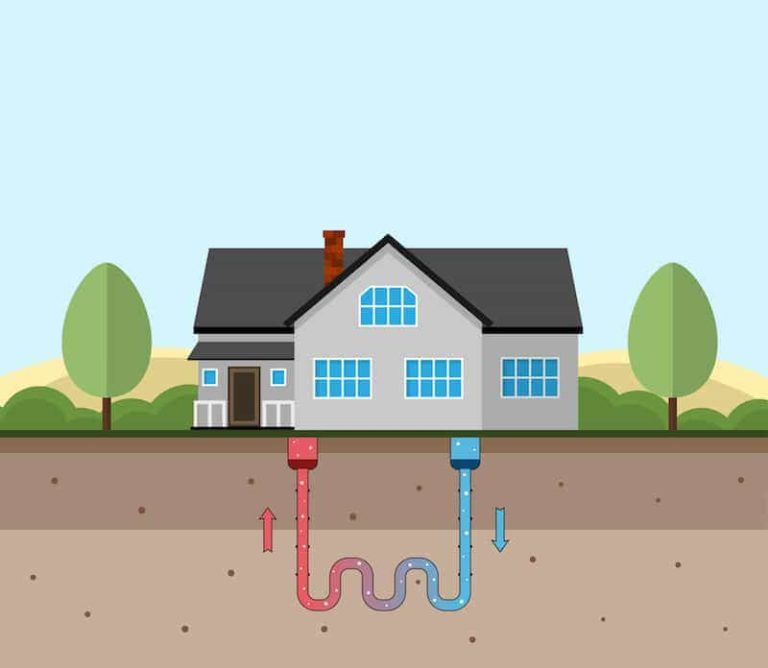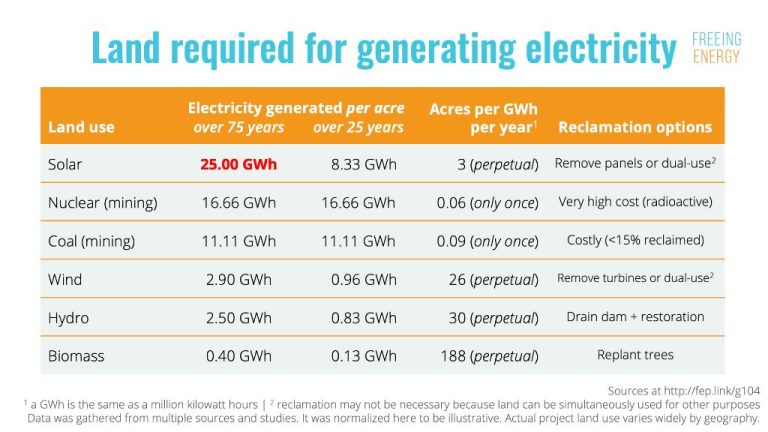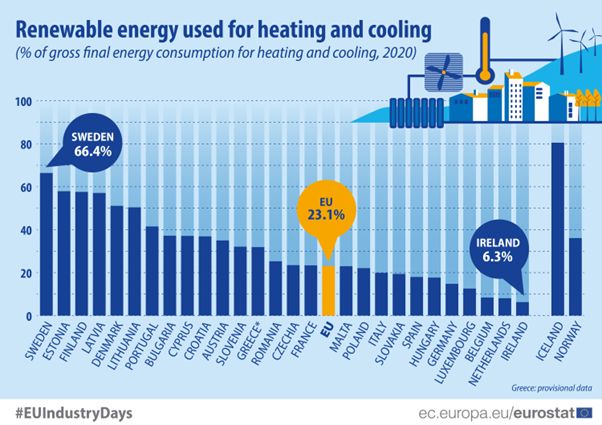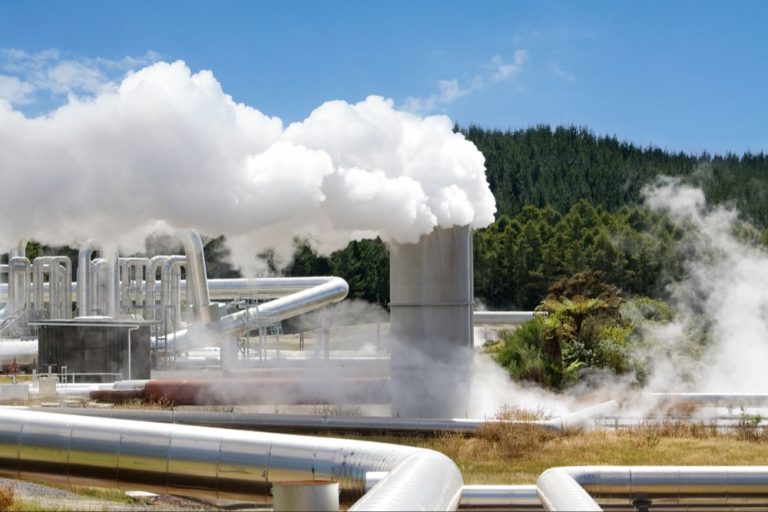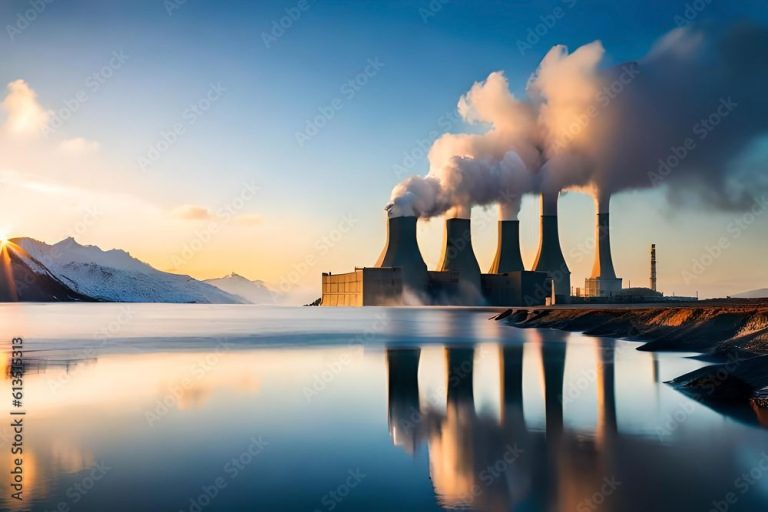Is Geothermal Heat Considered Electric?
What is Geothermal Energy?
Geothermal energy is heat derived from the Earth (1). It is a renewable energy source that utilizes the constant temperature of the Earth’s interior for a variety of direct-use and electric power generation applications. The temperature below the Earth’s surface remains between 50 to 300°F throughout the year, which can be harnessed to provide sustainable energy (2).
There are several examples of geothermal energy sources: hydrothermal reservoirs, hot dry rock, magma, and geopressured reservoirs. Hydrothermal reservoirs contain hot water or steam and are the most common sources used for geothermal power generation. Hot dry rock resources are heat sources lacking in water or permeability. Magma is molten rock or lava near the Earth’s surface. Geopressured reservoirs contain hot water or steam mixed with natural gas under high pressure (3).
Geothermal energy is harnessed by accessing the Earth’s internal heat through drilling wells or pump systems. Wells can tap into hydrothermal reservoirs to bring hot water or steam to the surface to turn turbines for electricity generation. Geothermal heat pumps can also transfer heat into or out of the ground for direct heating and cooling applications (4).
Sources:
(1) https://www.energy.gov/eere/geothermal/geothermal-basics
(2) https://www.twi-global.com/technical-knowledge/faqs/geothermal-energy
(3) https://www.eia.gov/energyexplained/geothermal/
(4) https://www.energy.gov/eere/geothermal/geothermal-basics
How Geothermal Power Plants Work
Geothermal power plants use steam or hot water from geothermal reservoirs deep underground to power a turbine and generate electricity. There are three main types of geothermal power plants:
Dry steam plants are the oldest and simplest type of geothermal power plant. They use geothermal steam directly from a reservoir to power the turbine. The first geothermal power plant was a dry steam plant built in Italy in 1904 [1].
Flash steam plants pump hot water from a geothermal reservoir at temperatures over 360°F under high pressure. The drop in pressure causes some of the water to rapidly vaporize or “flash” into steam, which then drives the turbine. Flash steam plants are the most common today [2].
Binary cycle plants pass geothermal water through heat exchangers to heat a secondary fluid with a much lower boiling point than water. This causes the secondary fluid to vaporize and drive the turbine. Binary cycle plants emit minimal greenhouse gases and can utilize lower temperature reservoirs down to 225–360°F [2].
Is Geothermal Heat Considered Renewable?
Geothermal energy is considered a renewable energy source because the heat it utilizes comes from the natural heat generated and stored within the Earth’s core, which is replenished continuously (Geothermal explained – U.S. Energy Information). Unlike fossil fuels such as coal, oil, and natural gas, which take millions of years to form and are finite resources, the Earth’s internal heat is essentially limitless and will continue radiating for billions of years to come.
The key factors that make geothermal energy renewable are:
- The Earth’s core is over 4 billion years old and produces heat continuously from the decay of radioactive materials deep within the mantle and crust.
- This heat is replenished and flows constantly between the core and crust, ensuring an endless supply of geothermal energy.
- Water heated by geothermal energy can be returned back into geothermal reservoirs after being used to generate electricity, keeping the resource renewable.
In contrast, fossil fuels form extremely slowly, taking millions of years, and there is a finite amount within the Earth’s crust. Once they are extracted and burned, they are gone forever. Geothermal heat can be harnessed again and again, making it a reliable and renewable source of clean energy.
Advantages of Geothermal Energy
There are several significant advantages to using geothermal energy as a source of power:
Clean and sustainable: Geothermal energy is considered a renewable energy resource since the heat is continuously produced inside the earth over billions of years. Unlike fossil fuels, geothermal power plants emit low levels of greenhouse gases and few other pollutants.1
Reduced carbon emissions: Geothermal energy has a significantly lower carbon footprint compared to conventional power plants. According to studies, geothermal power facilities emit 10-1,000 times less carbon emissions per megawatt-hour than a coal or natural gas plant.2
Reliable baseload power: Geothermal plants can operate continuously without disruption to generate baseload power. The plants typically run at 90-98% capacity factor throughout the year.3
Low maintenance costs: Once installed, geothermal power plants have lower maintenance costs than traditional power plants. Reservoirs are rarely depleted, so the resource can provide consistent energy for decades.
Disadvantages of Geothermal Energy
While geothermal energy has many benefits, there are some disadvantages to consider as well. Some of the main drawbacks of geothermal power include:
High Upfront Costs – Constructing a geothermal power plant requires significant upfront capital investment. Drilling exploratory wells and building the power plant infrastructure can cost millions of dollars before any electricity is even generated [1]. This makes financing and investment more challenging.
Limited to Geographical Locations – Geothermal plants need to be built over natural geothermal reservoirs with adequate heat and water flow. This limits geothermal energy to certain geographical locations like western states in the U.S., Iceland, the Philippines, and other seismically active areas [2].
Potential Emissions – While geothermal sites emit far fewer greenhouse gases than fossil fuel plants, some geothermal reservoirs contain gases like hydrogen sulfide, carbon dioxide, methane, and ammonia that can be released into the atmosphere. Proper plant operation can minimize these emissions.
Land Subsidence Risks – Extracting large amounts of geothermal fluid can cool the underground reservoir and cause the ground surface to subside or sink. Careful reservoir management is needed to prevent land subsidence damage.
Global Use of Geothermal Energy
The United States has the largest installed geothermal capacity in the world at 2,800 MW, according to 2021 data from the International Renewable Energy Agency (IRENA) [1]. [1]https://www.eia.gov/energyexplained/geothermal/use-of-geothermal-energy.php
Other leading countries using geothermal energy include Indonesia (2,100 MW), Philippines (1,900 MW), and Turkey (1,500 MW). Geothermal power plants operate in about 25 countries worldwide. In 2021, the global installed capacity for geothermal power was about 16,000 MW.
Geothermal energy has significant potential for growth worldwide, especially in countries located along tectonic plate boundaries. Estimates indicate over 11,000 MW of geothermal power could be developed just in the western United States. With supportive policies and technological advances, global geothermal capacity could expand substantially in the coming decades.
Geothermal vs Electric Heating
Electric heating works by using electricity to heat homes and businesses. This is usually done through electric baseboard heaters, electric furnaces, or heat pumps. Electricity runs through heating elements which warm up and transfer heat into the air or water. The electricity used is generated from various sources like natural gas, coal, nuclear power plants, or renewables like solar and wind.
In comparison, geothermal heating utilizes the stable temperatures just below the earth’s surface to provide heating and cooling. A geothermal heat pump system consists of underground pipes that circulate water or an antifreeze solution through the ground. This fluid absorbs heat from the earth in winter and rejects heat into the cooler earth in summer. The geothermal heat pump then concentrates the earth’s thermal energy and transfers it to the building.
According to Blocpower, geothermal heat pumps are generally more efficient than electric heating. They use 25-50% less electricity than electric heaters or furnaces. The US Department of Energy states geothermal heat pumps can reduce energy consumption for heating by 30-60% compared to electric resistance heating. This efficiency advantage makes geothermal heat more environmentally friendly.
However, geothermal systems have high upfront costs for installation. A full geothermal system can cost $20,000-$30,000 compared to $5,000-$10,000 for an electric furnace. But geothermal offers lower operating costs over the long run. Overall lifetime costs are estimated to be about the same for both technologies.
Is Geothermal Heat Considered Electric?
Electricity is energy that comes from the movement of charged particles, like electrons. It is considered an energy carrier that can be transmitted over distances through wires and cables. Thermal energy, on the other hand, is the internal energy of a system derived from the motion of its atoms and molecules. It involves heat transfer and is often generated through combustion, chemical reactions, or friction.
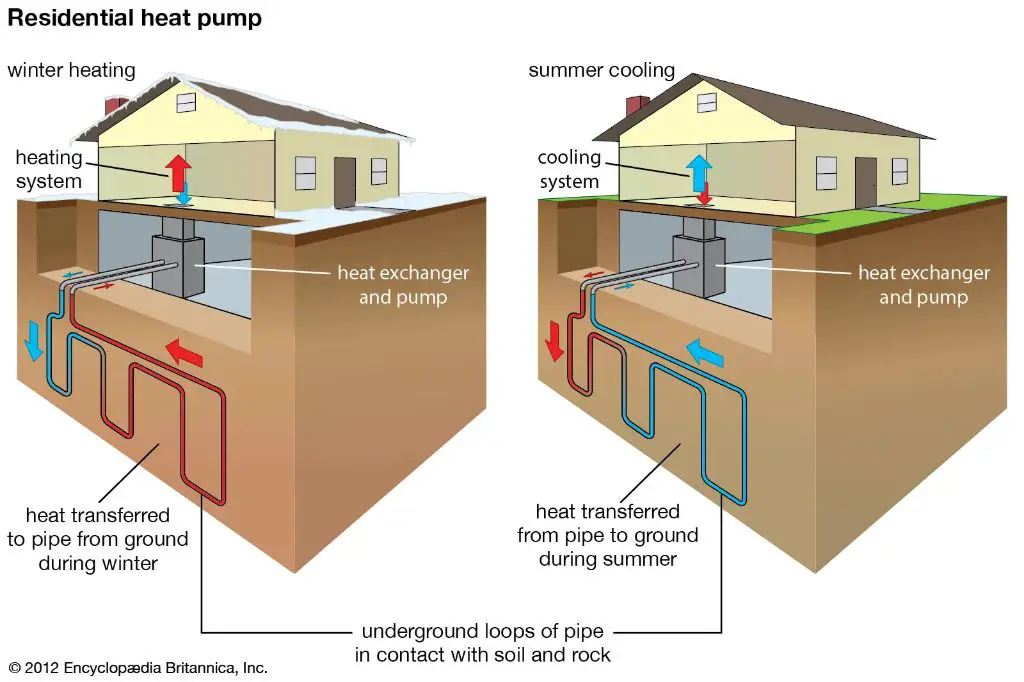
Geothermal energy utilizes the natural heat from the Earth’s interior to produce energy. There are three main technologies used: geothermal power plants, direct use, and geothermal heat pumps. Geothermal power plants use wells and pipes to bring hot water or steam to the surface. The steam rotates turbines that generate electricity, so geothermal power plants do produce electric energy. However, direct use applications and geothermal heat pumps use geothermal heat directly for heating, cooling, or hot water production without converting it to electricity first. So geothermal energy itself is thermal energy, but it can be converted to electricity through power plants.
In summary, geothermal heat energy is inherently thermal, but geothermal power plants utilize the Earth’s thermal energy to generate electricity. So geothermal technology can produce both electricity and direct thermal energy, depending on the application. The key distinction is whether the geothermal heat gets converted to electricity or used directly.
Future of Geothermal Energy
The future looks bright for geothermal energy. According to the U.S. Department of Energy, geothermal capacity could grow over 26-fold from today to 60+ gigawatts by 2050, meeting over 5% of U.S. electricity demand (https://www.energy.gov/eere/geothermal/future-geothermal-energy). MIT also predicts rapid growth, with global geothermal capacity potentially reaching 3,000 gigawatts by 2050 (https://energy.mit.edu/research/future-geothermal-energy/).
Several innovations could enable this projected growth. Enhanced geothermal systems (EGS) tap into deeper hot rock layers by injecting water to create artificial geothermal reservoirs. EGS could dramatically expand viable geothermal resources. New drilling technologies like plasma pulse drilling can also improve capacity. Ongoing research into advanced working fluids, materials, and hybrid solar-geothermal systems may further boost potential.
As nations transition to renewable energy, geothermal provides a reliable baseload power source with a small land footprint. Geothermal energy works 24/7, regardless of weather conditions. With the right support and investment, geothermal can play a major role in building a sustainable energy future.
Conclusion
In summary, geothermal energy harnesses the heat from the earth’s core to generate renewable electricity and heat. While geothermal power plants use steam from underground reservoirs to spin turbines and produce electricity, geothermal heating utilizes underground pipes and heat pumps to provide heating and cooling for buildings.
To answer the central question – no, geothermal heat is not considered electric. While geothermal power plants generate electricity, geothermal heating systems provide thermal energy for climate control. The key distinction is that geothermal electricity utilizes a turbine and generator, while geothermal heating moves heat directly from the earth.
Geothermal energy has many benefits as a renewable, sustainable energy source but also has some downsides related to high upfront costs and geographical limitations. Overall, as technology improves, geothermal offers great potential as a clean energy source of the future if utilized responsibly and optimally.

